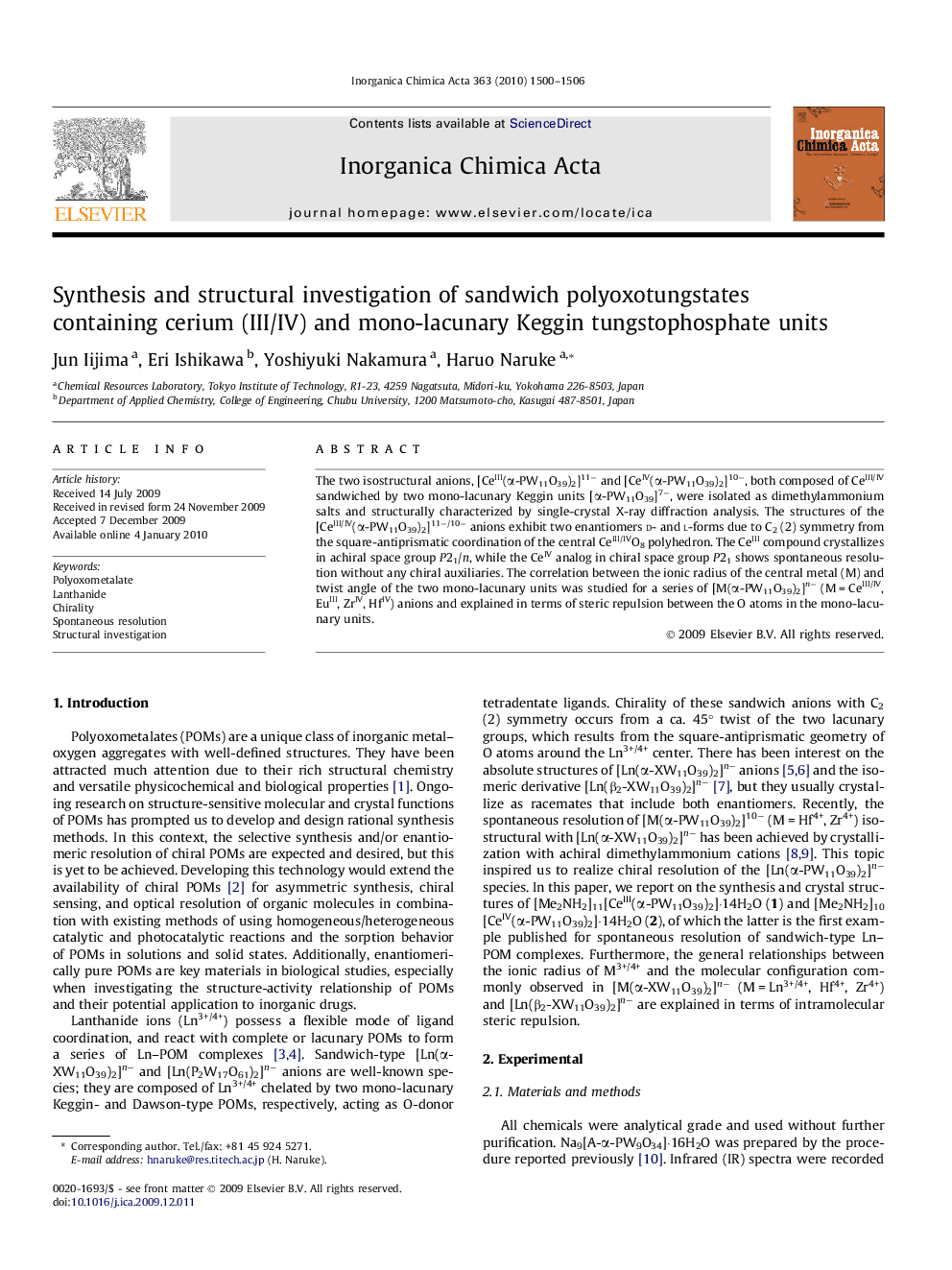| Article ID | Journal | Published Year | Pages | File Type |
|---|---|---|---|---|
| 1309199 | Inorganica Chimica Acta | 2010 | 7 Pages |
The two isostructural anions, [CeIII(α-PW11O39)2]11− and [CeIV(α-PW11O39)2]10−, both composed of CeIII/IV sandwiched by two mono-lacunary Keggin units [α-PW11O39]7−, were isolated as dimethylammonium salts and structurally characterized by single-crystal X-ray diffraction analysis. The structures of the [CeIII/IV(α-PW11O39)2]11−/10− anions exhibit two enantiomers d- and l-forms due to C2 (2) symmetry from the square-antiprismatic coordination of the central CeIII/IVO8 polyhedron. The CeIII compound crystallizes in achiral space group P21/n, while the CeIV analog in chiral space group P21 shows spontaneous resolution without any chiral auxiliaries. The correlation between the ionic radius of the central metal (M) and twist angle of the two mono-lacunary units was studied for a series of [M(α-PW11O39)2]n− (M = CeIII/IV, EuIII, ZrIV, HfIV) anions and explained in terms of steric repulsion between the O atoms in the mono-lacunary units.
Graphical abstractDimethylammonium salts of two isostructural anions [CeIII/IV(α-PW11O39)2]11−/10− (1 and 2) were isolated and structurally characterized by X-ray diffraction analysis. The anions have a chiral structure with point symmetry C2 (2), and exhibit two enantiomers in d- and l-forms. The compound 1 crystallizes in P21/n as a racemate, while 2 shows spontaneous resolution to yield crystals containing either l- or d-forms with the chiral space group P21.Figure optionsDownload full-size imageDownload as PowerPoint slide
